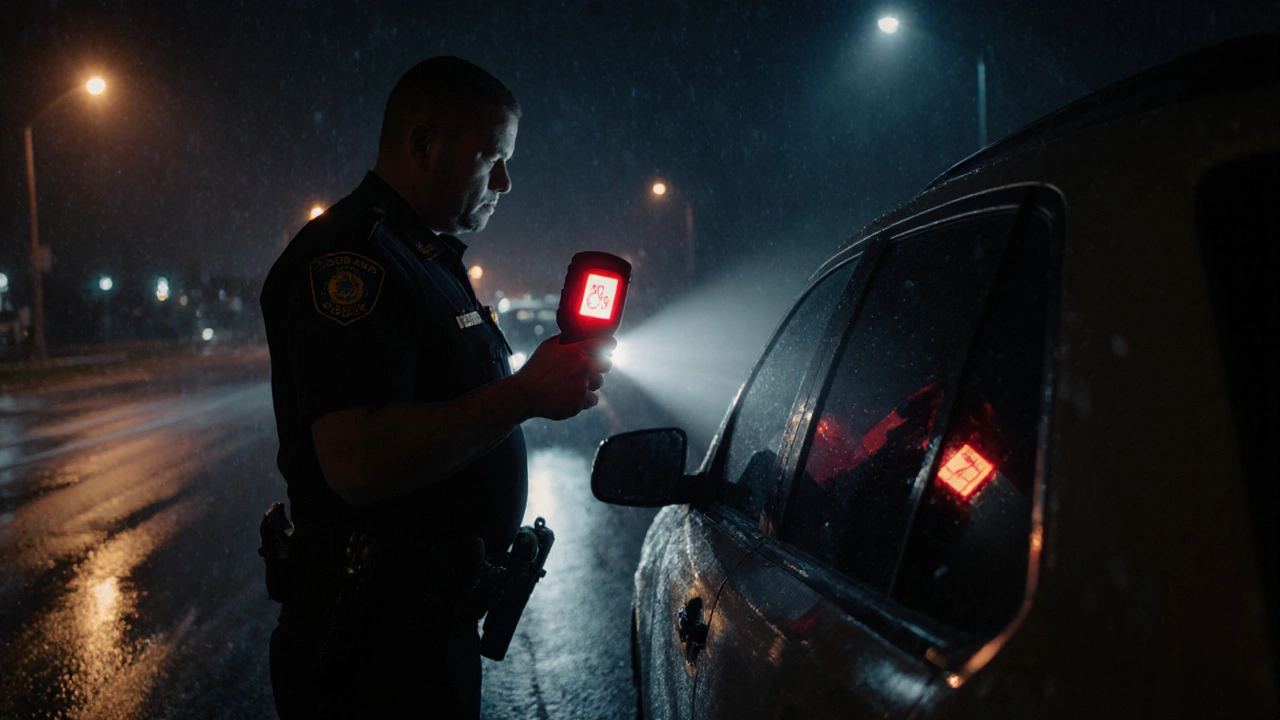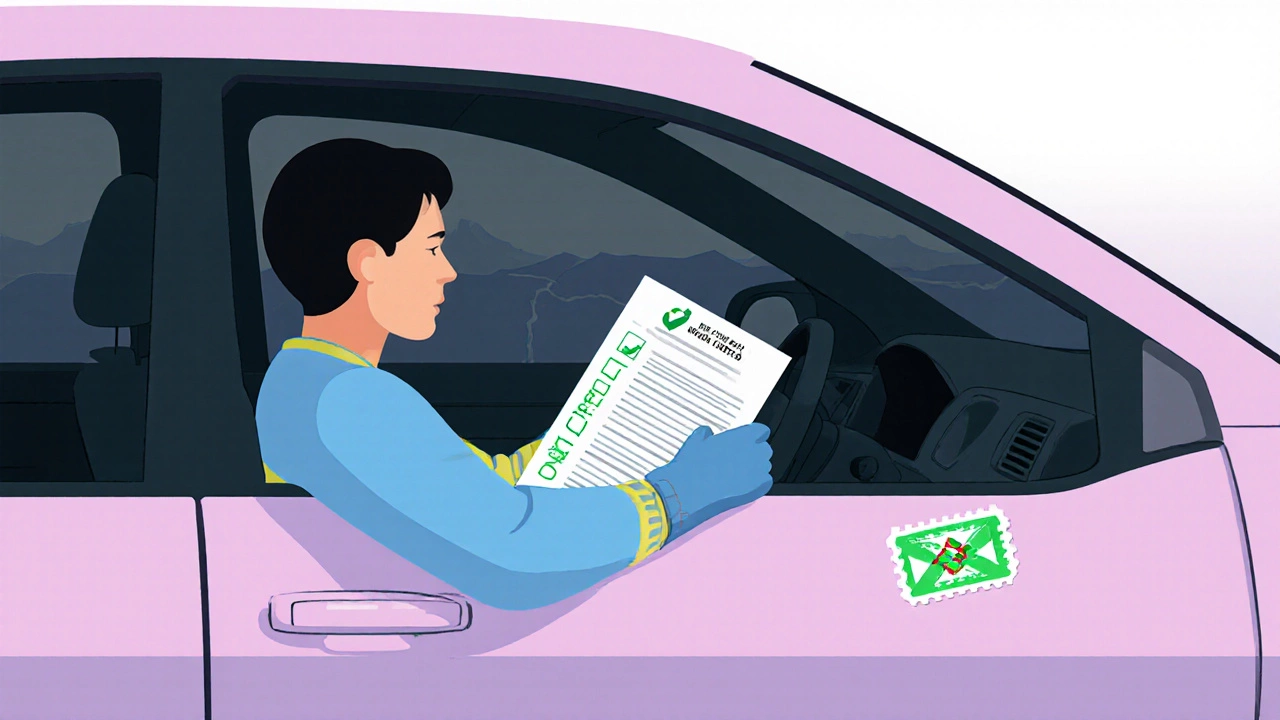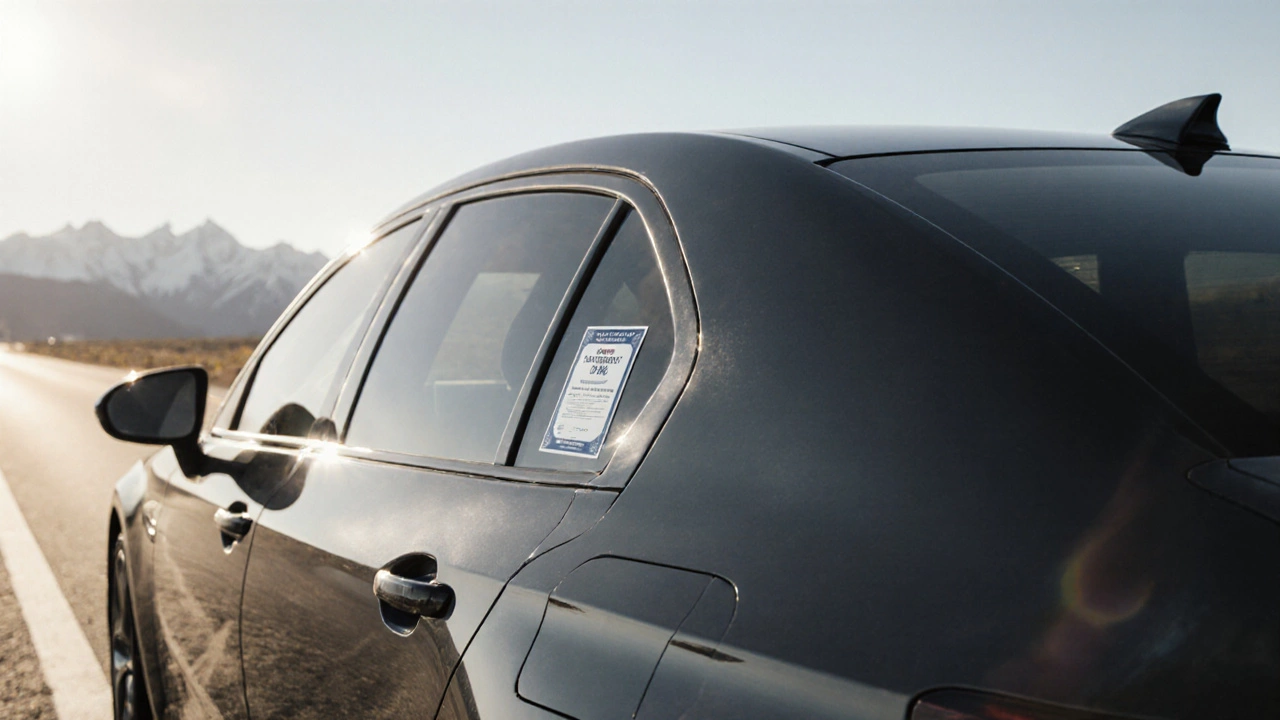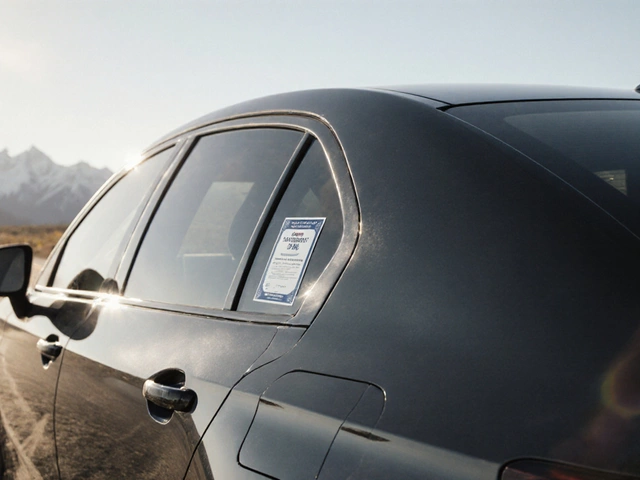Colorado Window Tint Legal Checker
Check Your Tint Compliance
Enter the VLT percentage and window location to see if your tint complies with Colorado law.
Result:
Key Takeaways
- Colorado does NOT allow 5% tint on any front or side windows.
- Front windshield must have at least 70% VLT; front side windows at least 35% VLT.
- Rear windows can go down to 5% VLT if a legal rear‑side sticker is displayed.
- Violations lead to fines, required removal, and possible vehicle registration hold.
- Compliance is achieved with a certified tint film and a CDOT‑issued sticker.
Wondering if a super‑dark 5% window tint will pass Colorado’s police checkpoints? The short answer is: Colorado window tint law only permits that shade on the rear side or back glass, and even then you must have the proper certification. Anything darker on the front windshield or front side windows is illegal and will get you a ticket.
What “5% Tint” Actually Means
When tint‑shops talk about "5%", they’re referring to the Vehicle Light Transmission (VLT). VLT measures how much visible light passes through the glass. A 5% VLT film blocks 95% of the light, leaving only a thin layer of illumination. The lower the percentage, the darker the window.
Understanding the Colorado Window Tint Law
Colorado window tint law is enforced by the Colorado Department of Transportation (CDOT) and local police agencies. The rulebook, found in Colorado Revised Statutes § 42‑2‑1082, sets specific VLT minimums for each glass area:
- Front windshield: minimum 70% VLT (no tint or a very light film).
- Front side windows: minimum 35% VLT.
- Rear side windows and back glass: any VLT is allowed, but a Tint certification sticker must be displayed on the driver’s side.
Because the law only caps how dark the front glass can be, a 5% tint on the rear side is legal - provided you have the required sticker. Anything darker on the windshield or front side instantly violates the statute.

How Enforcement Works and What Penalties Look Like
Police officers use a handheld tint meter to verify VLT levels during traffic stops. If a vehicle fails the inspection, the officer issues a citation that typically includes:
- A fine ranging from $100 to $200 per illegal window.
- A mandatory order to remove the illegal film within 30 days.
- Possibility of a hold on vehicle registration until compliance is shown.
Repeat offenders may face higher fines and court appearances. The Legal penalty is not just a monetary hit; it can also delay renewal of your license plates.
Getting Your Tint Legally Approved
To stay on the right side of the law, follow these steps:
- Choose a film that meets the VLT limits for the glass area you’re tinting.
- Have the installation done by a certified shop that can provide a Tint certification sticker with the exact VLT percentage.
- Affix the sticker to the driver’s side rear pillar (or the rear side window if the vehicle lacks a rear pillar).
- Keep the installer’s receipt and the sticker’s documentation handy in case you’re pulled over.
Remember, the sticker is your proof of compliance. If you lose it, you’ll need to get a replacement from the installer or CDOT.
How Colorado Stacks Up Against Neighboring States
Drivers often travel across state lines and wonder whether a tint that’s legal in one place will be fine in another. Below is a quick snapshot of the front‑side VLT limits for Colorado’s bordering states.
| State | Front Windshield Minimum VLT | Front Side Window Minimum VLT | Rear Side/Back Window Rules |
|---|---|---|---|
| Colorado | 70% | 35% | Any VLT with certification sticker |
| Utah | 70% | 35% | Any VLT with sticker |
| Wyoming | 70% | 35% | Any VLT with sticker |
| Nebraska | 70% | 35% | Any VLT with sticker |
| Kansas | 70% | 35% | Any VLT with sticker |
As you can see, most of the region mirrors Colorado’s standards, which means a 5% rear tint will usually travel without trouble-as long as you keep the sticker visible.

Common Misconceptions and Pitfalls
- “If the sticker says 5%, I’m good everywhere.” - Some states (e.g., Arizona) limit rear tint to 20% VLT. Always double‑check local rules before crossing state lines.
- “I can use a darker tint on the front if I’m only driving at night.” - VLT limits apply at all times; night‑time immunity doesn’t exist in Colorado.
- “DIY tint kits are cheaper and legal.” - DIY films often lack the certification sticker and may not meet the exact VLT rating, putting you at risk of a citation.
- “My dealer installed the tint, so it must be legal.” - Even dealer‑installed films need a proper sticker; ask for proof before you drive off.
Quick Checklist Before You Hit the Road
- Verify the VLT percentage of each film (use a meter or request the spec sheet).
- Ensure front windshield meets 70% VLT - typically no tint.
- Confirm front side windows are at least 35% VLT.
- Attach the certification sticker to the driver’s side rear pillar.
- Keep the installer’s receipt and sticker paperwork in the glove compartment.
Frequently Asked Questions
Is a 5% tint legal on the rear windows in Colorado?
Yes, Colorado permits any VLT on rear side windows or the back glass as long as a certified tint sticker is displayed on the driver’s side. Without the sticker, the tint is considered illegal.
Can I put a 5% tint on my front side windows?
No. Colorado requires a minimum of 35% VLT on front side windows. A 5% film would be well under the limit and result in a citation.
What happens if I get pulled over with illegal tint?
The officer will issue a citation, levy a fine (usually $100‑$200 per window), and order the tint’s removal. Your registration may be held until you show proof of compliance.
Do I need a special license to install tint?
Colorado does not require a separate license, but the installer must be certified to issue the tint sticker. Choose a shop that can provide the official documentation.
Will a 5% tint affect my visibility at night?
Yes, a 5% film dramatically reduces night‑time visibility. That’s why the law only allows it on rear windows where driver visibility isn’t compromised.


